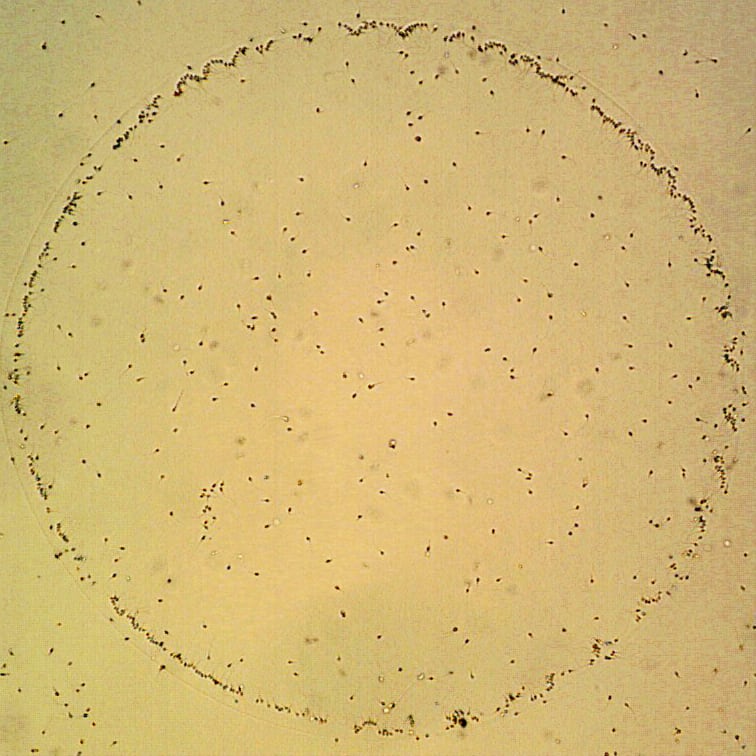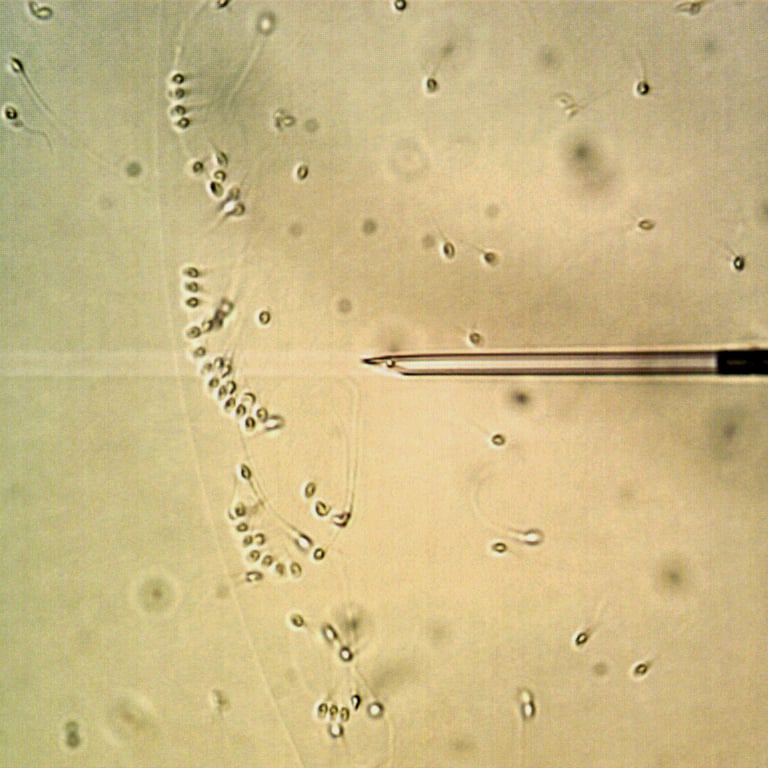A detailed analysis of sperm quality is required for the optimal choice of egg fertilization method.
Therefore, before starting the treatment, in addition to the basic semen analysi, we also examine the so-called functional tests of sperm and, based on all the results, we choose a suitable method of fertilization. Fertilization be done in two different ways – the classic method of fertilization and the method of ICSI (intracytoplasmic sperm injection) with its modifications.
Spontaneous fertilization
The classical method of fertilization (joint incubation of gametes) is performed if the parameters for the normal semen analysis are met and the presence of autoantibodies against sperm is excluded.
It takes place by adding a certain concentration of sperm to a special fertilization medium with eggs and their joint incubation – this is the so-called “spontaneous fertilization in a test tube”.
Intracytoplasmic Sperm Injection (ICSI)
If the parameters of the semen analysis are insufficient, with a low number or poor quality of the obtained eggs, with an immunological factor of infertility, in patients whose embryos are to be examined by the PGT method, it is necessary to proceed with ICSI fertilization. ICSI is a micromanipulative method in which an embryologist uses a micropipette to inject sperm directly into an egg. The whole process is performed using a micromanipulator under the control of a microscope. A micromanipulator is a device that converts relatively coarse hand movements into gentle movements of a micromanipulation needle that inserts a preselected sperm into an egg.
Watch a short video – fertilization of an egg by the ICSI method from our IVF Laboratory
PICSI (ICSI of preselected sperm)
PICSI is a micromanipulation technique that allows the selection of sperm for fertilization of an egg based on its functional quality.
In this method, sperm are incubated in a petri dish, the bottom of which is covered with hyaluronan. Subsequently, only sperm bound to hyaluronan are selected for ICSI. Hyaluronan is a mucopolysaccharide that occurs naturally as part of the intercellular mass surrounding the egg together with cumulus cells. In order for sperm to successfully penetrate and fertilize an egg during natural fertilization, it must be able to bind to hyaluronan. Only mature sperm are capable of such interactions. Scientific studies have confirmed that sperm capable of binding to hyaluronan have better morphology, a statistically lower proportion of chromosomal abnormalities and better DNA integrity.
The main advantage of the PICSI method is the possibility of selecting sperm on the basis of its functional properties. It is important to realize that on the basis of the same principle, sperm are selected even during natural fertilization taking place in a woman’s body.
Defects such as sperm immaturity, chromosomal abnormalities, or damaged sperm DNA integrity are often not visible to the microscope with the naked eye and therefore cannot be eliminated if the sperm is selected by an embryologist. If we know from previous examinations that sperm with such defects occur in male ejaculate, it is recommended to fertilize the eggs using the PICSI method.
Watch a short video – fertilization of an egg by the PICSI method from our IVF Laboratory
TESE (testicular sperm extraction)
Surgical sperm collection is performed if no sperm (azoospermia) are present in the male ejaculate or if sperm are present in very small numbers and have poor physiological properties. If the process of spermatogenesis (sperm development) is going well, sperm can be collected from the testis using the TESE and TESA methods or from the epididymis using the MESA and PESA methods.

